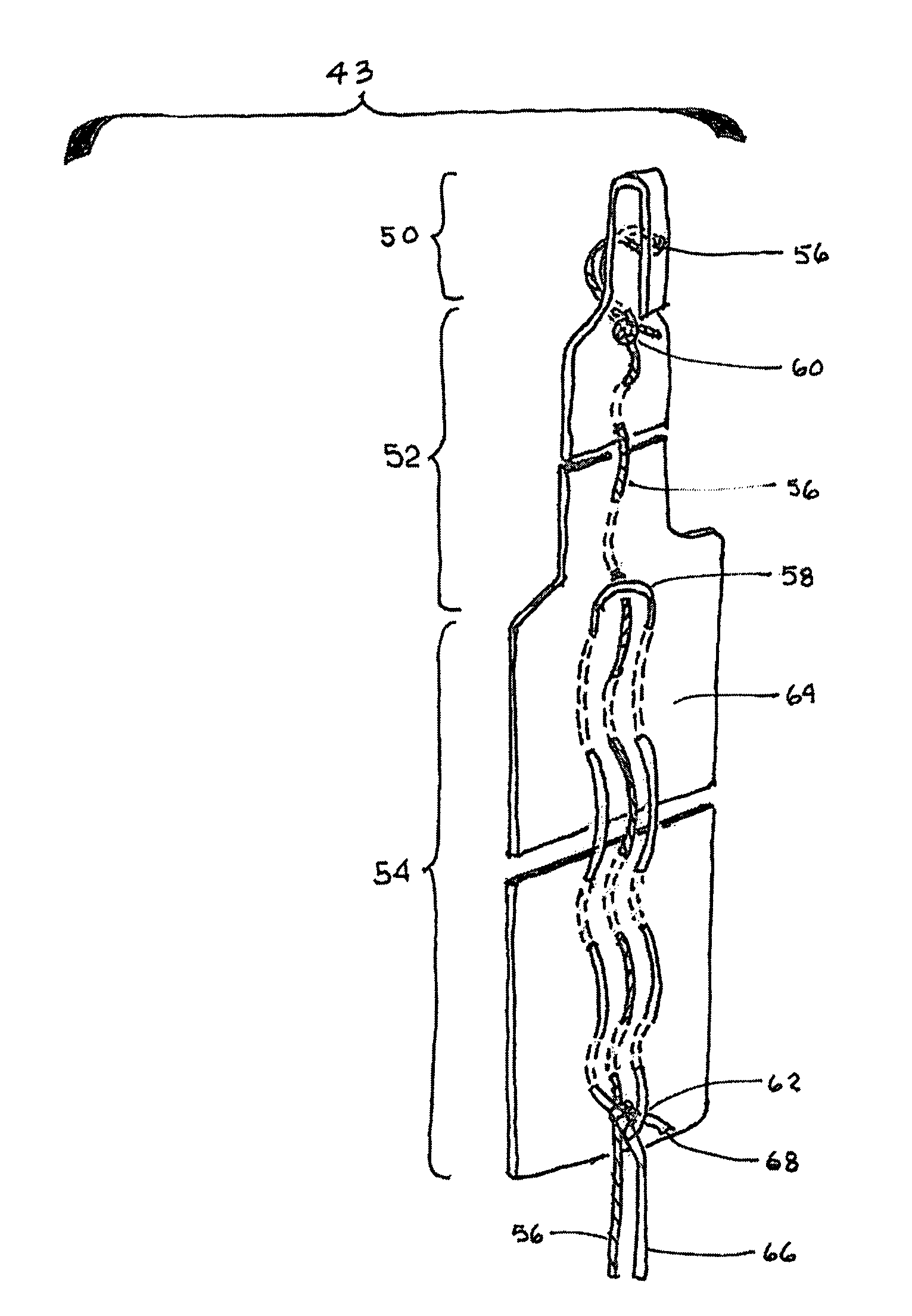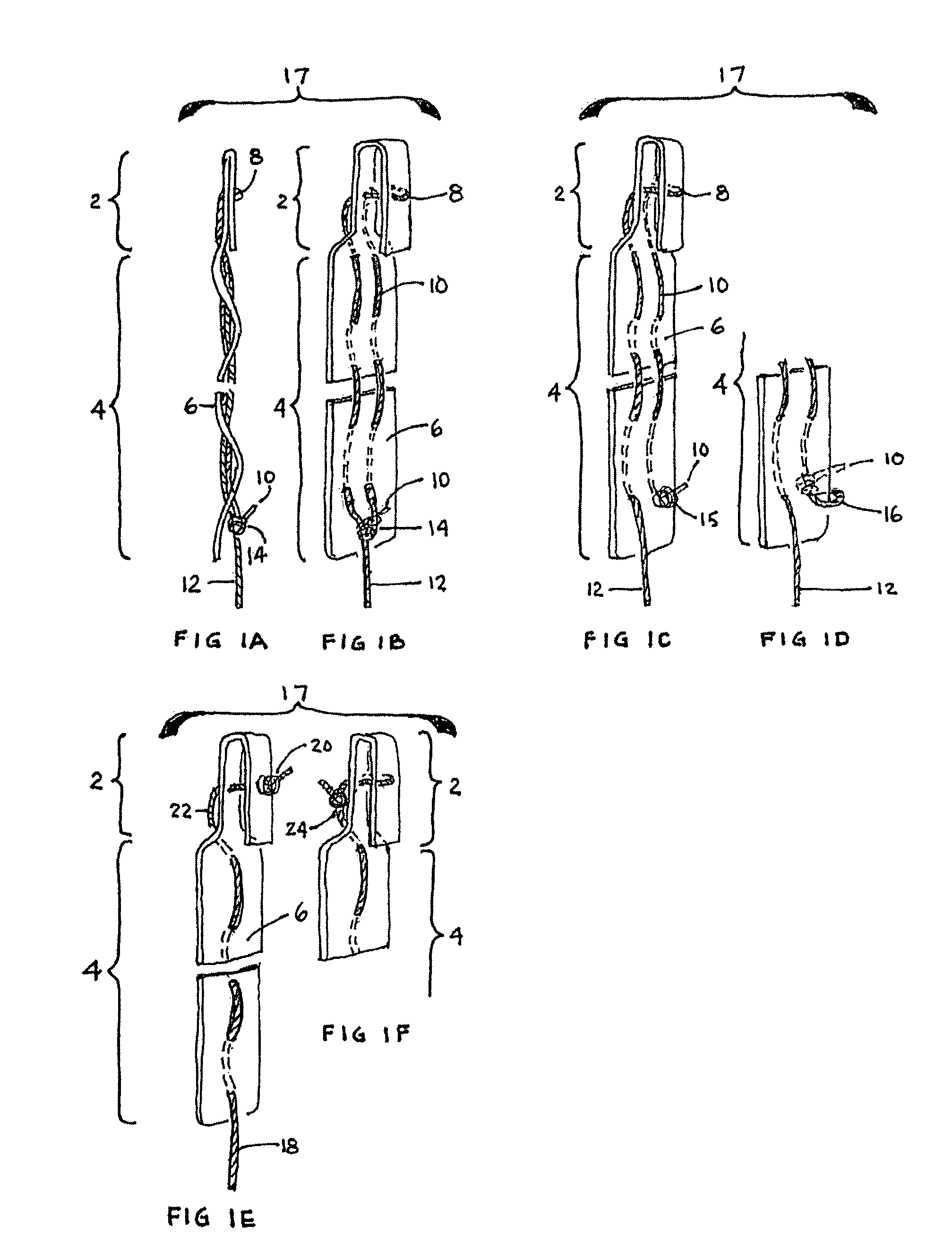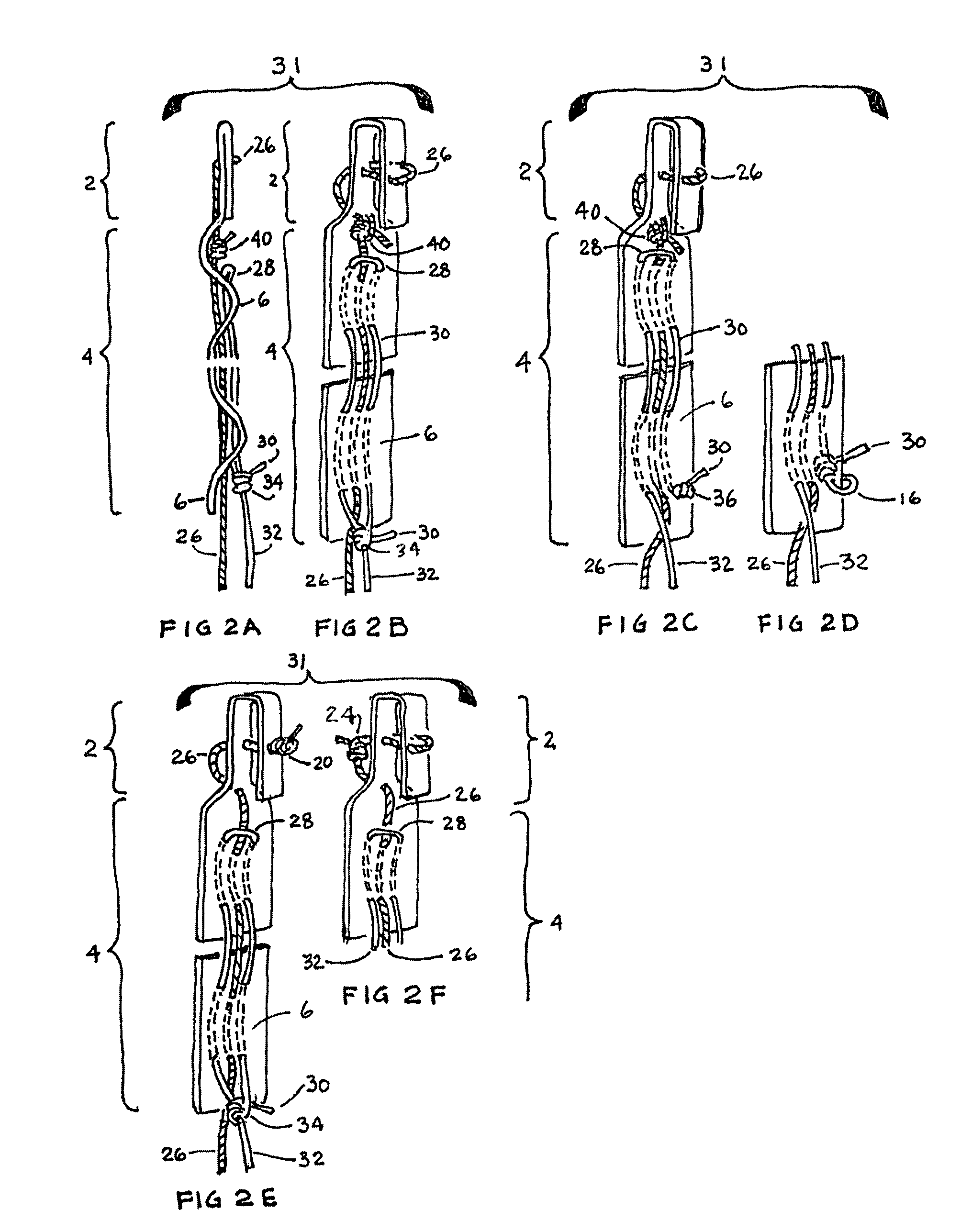Closure medical device
a medical device and a technology for closing, applied in the field of closing devices, can solve problems such as the hole leading from the vessel
- Summary
- Abstract
- Description
- Claims
- Application Information
AI Technical Summary
Benefits of technology
Problems solved by technology
Method used
Image
Examples
Embodiment Construction
[0044]The closure device is made of a bunchable material that bunches within the tissue tract. The device is delivered in a delivery sheath through the introducer sheath through the tissue tract to a vessel having a puncture hole. The distal end of the device is seated against the vessel wall and material comprising the proximal section of the device is bunched within the tissue tract to provide an environment for blood coagulation, closure of the puncture hole and sealing the space within the tissue tract. The material of the device is a biocompatible material and can be partly or fully bioabsorbable or biodegradable.
[0045]Turning now to the figures, FIG. 1A-1F depict the general embodiment of a device 17 having a distal section, a proximal section and a single tension member running through both the distal section and proximal sections and controlled by proximal ends that are proximal to the proximal section. That being said, FIG. 1A depicts a side view of an embodiment of device ...
PUM
 Login to View More
Login to View More Abstract
Description
Claims
Application Information
 Login to View More
Login to View More - R&D
- Intellectual Property
- Life Sciences
- Materials
- Tech Scout
- Unparalleled Data Quality
- Higher Quality Content
- 60% Fewer Hallucinations
Browse by: Latest US Patents, China's latest patents, Technical Efficacy Thesaurus, Application Domain, Technology Topic, Popular Technical Reports.
© 2025 PatSnap. All rights reserved.Legal|Privacy policy|Modern Slavery Act Transparency Statement|Sitemap|About US| Contact US: help@patsnap.com



